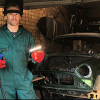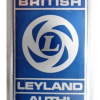To be honest I don't really understand that "two plug" idea....
I have 3-phase x 16A system in my house with C-type breakers. I have a 5p socket in my "shed" as I used a borrowed, 3-phase spot welder when I made the 1st Mini. It worked without issues.
The new machine is 1-phase only, but I installed a longer 3x2,5 cable to it and I wired a 5p plug (1P + PE + N ) to connect to that socket.
Two weeks ago I sold my old Tecna machine, it was a 2-phase 400V welder. It has no timer, I made good welds with it, but when I welded the heelboard to floor some spots broken. I believed that the machine is bad, not me... The man who bought it teached me how how should i have used it
I really regretted it and I can not find a good "old-school" machine locally
Hi Gaspen,
I have the same Tecna as yours in the picture - just with longer arms.
it seems we are lucky in Central Europe to have decent electrical supplies ( i.e. 400V 3-phase of decent amperage). I have connected my 230V Tecna to 400V 3-phase by just using one of the three phases. Because I this is a high current supply, where the old electric heating was once installed, with an old school 50A fuse for each phase.
I have bought a cheap rod chamferer for the drill, so I can re-shape the tips to the corect size (to be welded metal thickness + 3mm = tip diameter) .
I still haven't sussed out what the knob on the rear of the welder does? Which way does in increase and decrease the power?
Cheers from neighbouring Austria
Hey !
I also connected my welder like you.
With the rear knob on the Tecna you can adjust the clamping force of the arms. CW : increase, CCW : decrease.
Simply you can adjust the force needed for squeezing the handles to activate the micro-switch. Or something like this ![]()
















